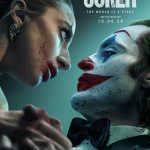The phrase “Necessity is the mother of invention,” comes to mind when thinking of the plight of RKO Studios in 1942. Having taken a gamble in signing Orson Welles to an exclusive contract, the company was hemorrhaging money. The wunderkind’s Citizen Kane was a box office failure, while the budget of his second feature, The Magnificent Ambersons, was ballooning to the point where it turning a profit was highly unlikely. Other box office disappointments brought the studio to the brink of bankruptcy and radical steps needed to be taken to save it.
Taking over for studio head George J. Schaefer, one of the first steps Charles Koerner took was to create a B-movie unit. They were charged with shooting low-budget movies quickly so that new product could be put before audiences quickly in the hopes it would lead to a rapid cash infusion for the studio. Val Lewton, a writer who had worked with David O. Selznick, was put in charge of this production unit, with the task of making films with budgets under $150,000, running times under 75 minutes and shooting completed in 3-4 weeks. Capitalizing on the resurrection of the horror genre at Universal Pictures with the release of The Wolfman and The Ghost of Frankenstein, the unit was charged with making horror films, scripts written to fit the sensational titles supplied by RKO’s marketing department. Seems they had been surveying audiences asking them which films they’d like to see from a list of lurid titles they provided.
The first of these films, Cat People, was a runaway success, grossing over 10 times its budget of $135,000. This was quickly followed up by I Walked with a Zombie and six other films released between 1943 – 1946, their box office success saving the studio from insolvency. Because of Lewton’s success, studio executives left him alone and as a result, he and his crew, Jacques Tourneur, Mark Robson and Robert Wise, were able to expand on the genre, creating movies that did not rely on shambling monsters or the undead to strike fear in their audiences. Instead, psychological horror was the focus, their characters often haunted by mental illness and paranoia that tapped into the deep-rooted anxiety of wartime America.
The Criterion Collection’s latest addition to their line is a handsome, two-film edition featuring Lewton’s I Walked with a Zombie and The Seventh Victim, examples of the producer’s groundbreaking, under-the-radar work. Despite it’s garish title, Walked is a haunting version of Jane Eyre that finds nurse Betsy Connell (Frances Dee) plunged into the voodoo culture of the carribean when she agress to minister to plantation owner Paul Holland’s (Tom Conway) afflicted wife, the zombie of the title. Victim follows the efforts of Mary Gibson (Kim Hunter, in her film debut) who travels to New York City to find her missing sister Jacqueline (Jean Brooks), who may have fallen vicitm to a satanic cult.
Sporting 4K restorations of both films (the package is available in Blu-Ray and DVD editions as well), the package is a prime example of what makes Criterion the standard bearer of physical media. Included is the documentary Shadows in the Dark: The Val Lewton Legacy, featuring interviews with Richard Matheson, Harlin Ellison, Joe Dante, and Guillermo del Toro, among others. It provides a concise look at the producer’s career as well as insightful commentary on each film in his RKO horror cycle. In addition, a collection of audio essays from Adam Roche’s podcast The Secret History of Hollywood features wonderful anecdotes about the movies. Finally, excerpts from an episode from the PBS series Monstrum, titled The Origins of the Zombie, from Haiti to the U.S. proves essential as it provides a different perspective to Walked.
Essays by critics Chris Fujiwara and Lucy Sante, as well as audio commentaries from critics Kin Newman, Stephen Jones and Steve Haberman round out this handsome package. If you’re new to Lewton’s work, this two-movie set is the perfect entry point for those wishing to explore his work. For long-time fans, this is a must for your home video library as these features never looked or sounded this good, while the films themselves continue to bear dark fruit upon repeated viewings.




